Hockey is one of the fastest sports in the world. Let’s start with the numbers first:
How many ice hockey players are there in the world?
According to the International Ice Hockey Federation (IIHF), there are 1.4M ice hockey players world-wide. Canada is the top country with over 34% of the total player population, followed by the United States, with 32%.
But the US and Canada are not the only countries where hockey is gaining traction. As shown in the chart below, according to Statista, Czech Republic (120k), Russia (110k), and Finland (73k) and Sweden (62k), have the highest number of registered ice hockey players.
Source: Statista, 2017/2018
Now what about technologies used in Hockey? Hockey is one of the pioneers when it comes to adopting emerging technologies to help improve the fans experience and the players’ sports performance…starting with the NHL.
In the 2015 All Star game, the NHL (National Hockey League) made history by placing tracking devices on the players’ jerseys and in the puck.
In the upcoming section, we are going to go over some of the most interesting technologies used in the world of hockey. Our goal is not to cover all the technologies but to talk about what we believe have the most potential.
Hockey stick sensors
A growing number of hockey teams have started using hockey stick sensors in order to help players improve their performance. An example of such product is FWD PowerShot 2 Hockey Stick Sensor. Concretely, the PowerShot 2 is inserted into the end of any hockey stick. The metrics include power, speed, amplitude and the type of swing created from any kind of shot. When used in conjunction with the app, the sensor can wirelessly communicate up to 5,000 shots. The FWD Sportscard app displays info like stick speed, flex gain, duration, angle, weight transfer and rotation speed. With all of this vital information shown on the app, players can visually see where and how they can improve.
Video: FWD PowerShot 2 Hockey Stick Sensor.
GPS trackers
GPS trackers have also grown in popularity among hockey teams. One of the key companies in this area is Catapult Sports, a leading GPS tracking company, which has teamed up with the NHL to track player movement and data. Through Catapult’s GPS tracker, coaches can determine how intensely players use their bodies. Wearables are allowing athletes to train smarter, but not necessarily harder. During the early stages of data tracking, injury reduction still remains the key focus. Even so, various types of data can help coaches and players improve their game.
Video: Catapult Sports
Helmet sensors
Concussions are a growing concern in the world of hockey. To help better prevent concussion issues, a growing number of companies are building helmet sensors. One of the companies focusing on this area is i1 Biometrics, which is now part of Start It Labs. I1 developed a helmet sensor called Shockbox. Concretely It is attached to the top of a hockey helmet and provides an immediate wireless transmission to the phone of a hit count, and when a player has experienced a head impact that could result in a concussion. When the Shockbox helmet sensor is attached to a player’s hockey helmet, it allows real-time assessment of head impact levels.
Video: i1 Biometrics
Hockey analysis systems
Over the years many hockey leagues and teams have also been using analytics software to help improve players’ performance. One of the key vendors in the space is HockeyTech which provides hockey-related technologies, analytics, and information services. Of note, HockeyTech was founded in 2012 by Stu Siegel, a technology entrepreneur and former Florida Panthers (NHL) Managing Partner/CEO. HockeyTech has made six company acquisitions to date, integrating and developing one-of-a-kind hockey-focused tools. HockeyTech’s brands have been providing cutting-edge solutions for the hockey world since 1998.
HockeyTech offers a one-stop shop for hockey analytics. It offering is comprised of RinkNet (player management), ISSHockey (scouting system), LeagueStat (statistics provider), NextTesting (skills assessment) and FastHockey (video streaming),
Picture: HockeyTech
LED bracelets
In the world of pro hockey, technologies improving the hockey fans experience have also emerged over the years. One of the most engaging forms of fans experiences has been around the use of LED based translucent silicon wristbands as part of pre NHL shows.
One of the leading companies in this emerging field is PixMob, a Montreal company, which produces translucent silicone wristbands that are embedded with LED lights. The lights pulsate with colors in sync with music that played throughout the arena during NHL games.
NHL teams such as the Philadelphia Fylers, SJ Sharks, or Toronto Maple Leafs, just to name a few, have been working with PixMob to create pre games shows using their technology. Since its creation PixMob technology has enhanced and activated crowds at over 1000 different events and has worked with a number of notable clients including, the Super Bowl, the Olympic Games, NBA All-stars, MLS All-Stars, Pink, Eurovision, Tiësto, Heineken and Microsoft.
It is also worth pointing out that the wristbands cost roughly $5 to $10 per person, which covers all the related equipment and support.) Today, PixMob currently designs their products for large events that host anywhere from 500 to 100,000 people. You can see below what the PixMob experience looked like during a Toronto Maple Leafs NHL game.
Video: PixMob
Here is a video explaining how Pixmob technology works:
Video: PixMob
VR training for hockey players
VR also has become one of the key emerging technologies using in the world of hockey. One of the most innovative VR experiences in hockey has been VR training. Hockey brain training company Sense Arena is one of the key players there as it has developed a VR hockey experience designed to improve players’ hockey awareness, skill and on-ice intelligence. It gives hockey fans the ability to virtually take shots on a goalie and receive passes without any other players there. There are over 70 different drills included with Sense Arena. Regarding cost, Sense Arena is no small investment. There are two versions of the Sense Arena platform available. First, the VR Hardware Pro pack includes an HTC Vive Pro, two extra HTC lighthouses, four trackers, one wireless adapter, a VR ready PC with a touch monitor. That one sells for $5,480 with a $199 a month subscription. You can check out the video below to see how it works:
Video: Sense Arena, CNET
What should we expect as the future of the hockey fans experience? Statistical and biometric data as AR overlay on live TV or second screen app…
Earlier this year we predicted that in 2019 we would see the first major US pro team launch a second screen AR experience leveraging live statistical data during live games. Back in April 2019, the NHL announced its plan to launch a puck and player AR tracking technology at some during the 2019-20 season. As part of that the NHL announced a new betting partner: William Hill. The league now has three sports betting partners. Betting on NHL games at William Hill’s Nevada sportsbooks has increased 38% this season over last season after increasing more than 80% from 2016-17 to 2017-18 with the arrival of the expansion Golden Knights, according to Tom Gulitti of the NHL:
“The data provides other opportunities for the audience for engage, whether it’s used from a gaming standpoint, fantasy leagues or even for their own education and insight into the game,” Rogers Media president Rick Brace said. “It’s the evolution of the product to take it to take it to the next level that just adds to the entertainment value.”
? You can watch the NHL’s AR demo showing the speed of the puck as an AR overlay here.
Here is below what the AR NHL experience looks like.
So you may ask: “What’s coming next? How could this type of AR hockey fans experience evolve over time?”.
In the future, we expect mixed reality apps from Microsoft Hololens and Magic Leap to use ShotTracker playbook in order to allow hockey fans to wear a pair of smart glasses at a stadium and look at a player on the field and see their statistical and biometric data just by looking at them at a live sports event. You can see below the ShotTracker AR app which enable fans to point to a player on the field and see live statistical data as an AR overlay. You can watch the video of this AR app here.
As we noted earlier, we also think that live betting will become a key part of the augmented video (AR) hockey experience. The idea here again is to allow fans to watch augmented video replays and bet on the next play, and compete with their friends in real-time during live games.
The NFL shared some Nielsen research data with the NHL. It indicated that people who wagered watched 19 more football games per season than those who didn’t. And, 75-80% of the bets are in-game, as opposed to putting down cash on the spreads beforehand. This could be a key driver for future adoption of betting as part of an AR experience.
Here are some examples of the in-game prop bets that are part of the BetGenius prototype:
Where will the next goal enter the net?
Will the next goal be faster or slower than 88 m.p.h.? (The key here is the bettor can change the number as they wish)
What area of the ice will the next goal be scored from?
Ultimately, we believe that theses types of AR experiences will help the NHL drive additional revenue, starting with live betting where they can take a cut of this fast growing market. Betters will be able to leverage live data to help them make real time decisions. Of note, the US Sports betting industry is expected to be worth between $3.1B and $5.2B in five years’ time, putting the U.S. on track to surpass the UK and China, according to Gambling Compliance. But the biggest question here regarding the NHL’s upcoming AR experience is: Will they share the players’ live biometric data (HR..) with the fans? We believe it is highly unlikely in the short term. Sharing non controversial data such players’ velocity, speed, is much more likely in the short term. However, over time it could become part of the AR betting experience.
Bottom line: The world of hockey has become a pioneer when it comes to emerging technologies (AR, VR, smart sensors/wearables, LED based wristbands, etc.). We expect the world of pro hockey, starting with the NHL, to remain out in front. The expected launch of a new AR fans experience in the upcoming NHL season should set a precedent among top North American sports leagues. So are you ready for it? Hockey fans certainly are….

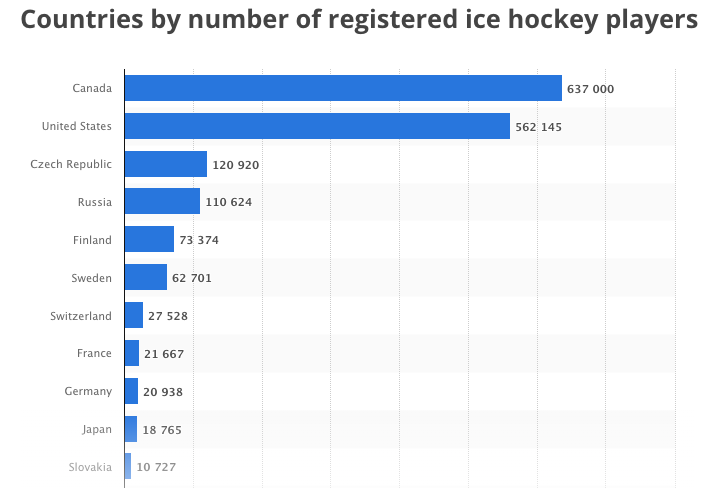

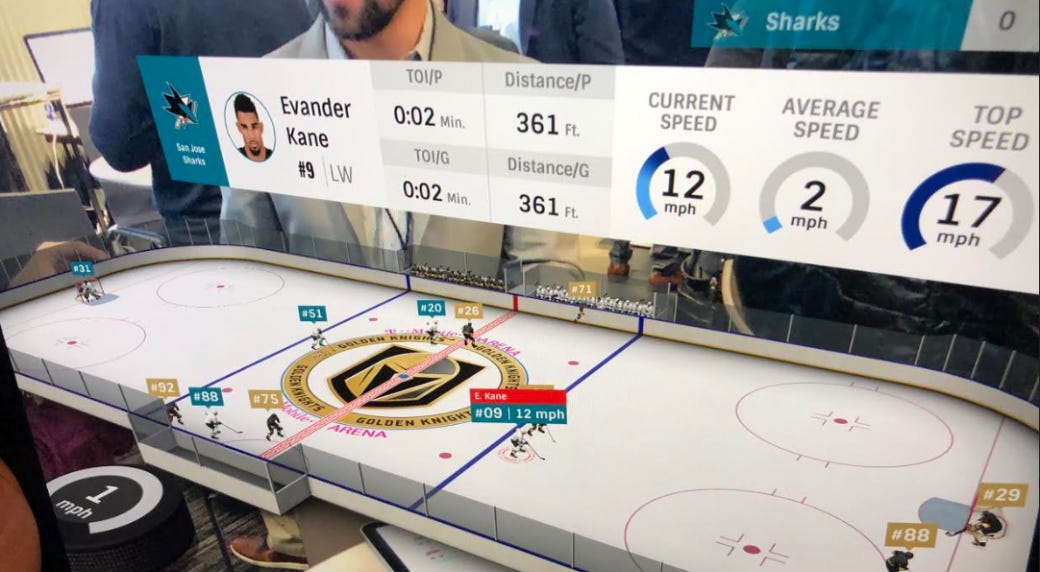
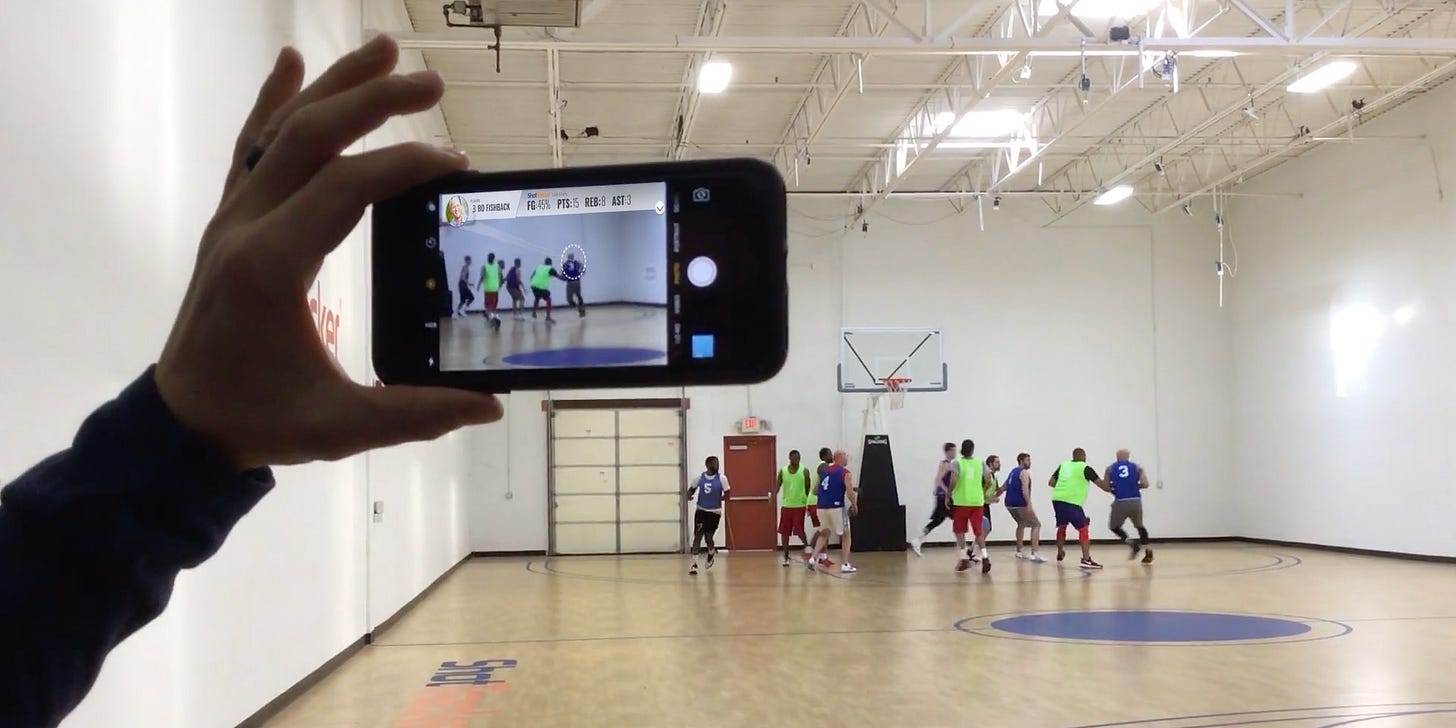
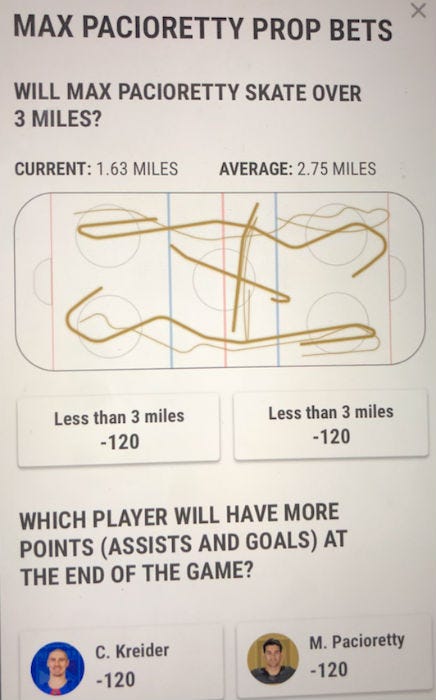

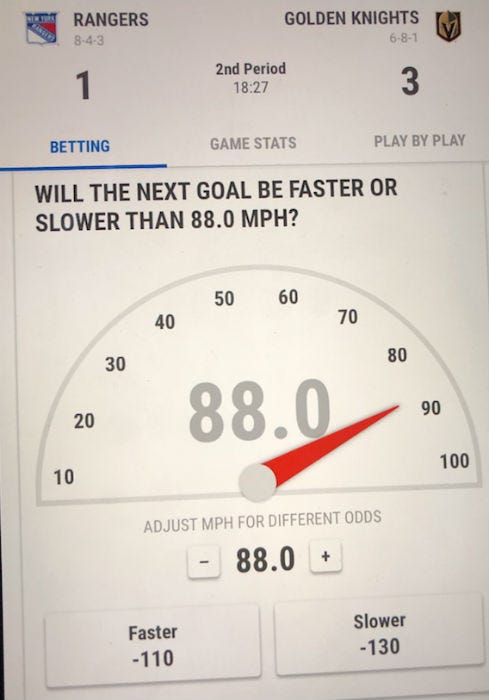
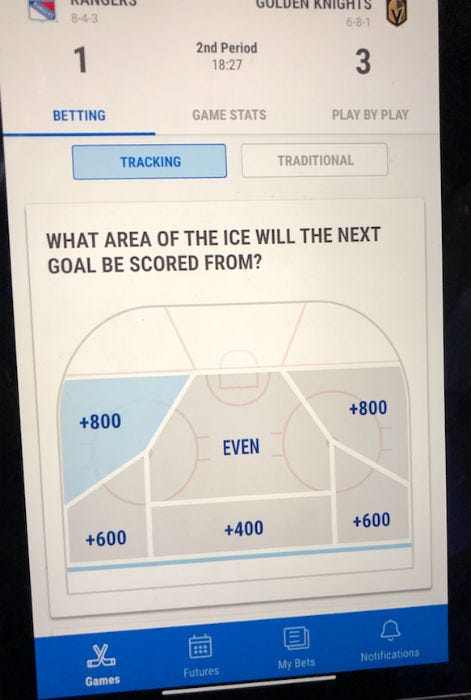
Leave A Comment
You must be logged in to post a comment.